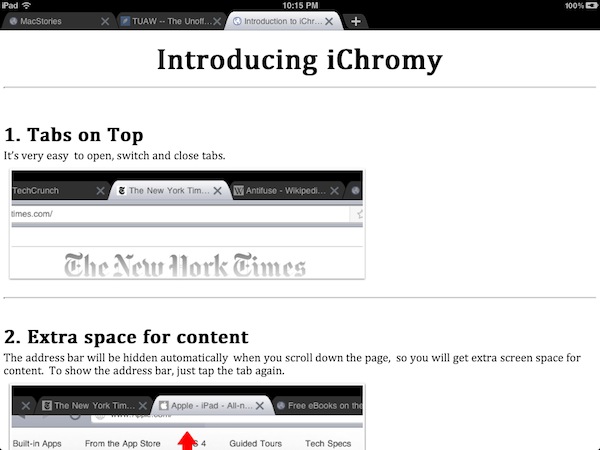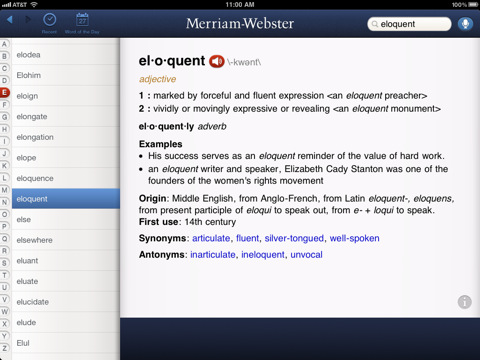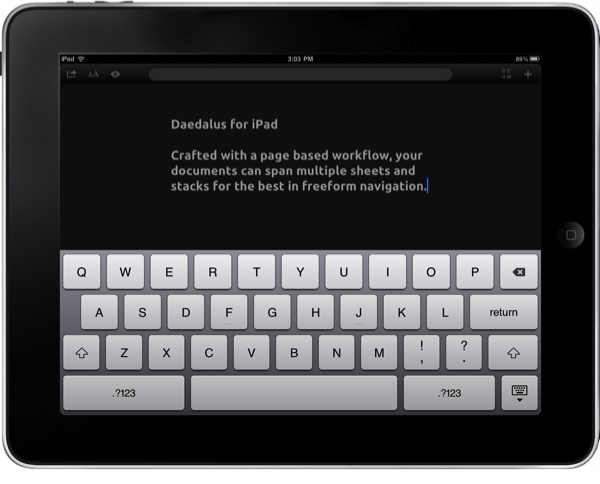Bluetooth AD2P has opened up a market of fantastic audio products that allow us to stream high quality stereo audio from our smartphones to speakers, headsets, and to car electronics. SuperTooth is just one of many companies who focus specifically on handsfree, bluetooth accessories for travel that work seamlessly with iPhones (and other smartphones of course). Straying from the tradition of car kits and speakers, SuperTooth has launched into the fray of home and portable audio with the SuperTooth Disco, a 28 Watt RMS Bluetooth AD2P speaker that can blast tunes without the need for an electrical outlet. Our full review past the break!
Posts tagged with "iPad"
MacStories Product Review: SuperTooth Disco
Back to School Announcement at WWDC with Special iPad Discounts?
BGR reports one of Apple’s announcements at the upcoming WWDC will be about the Back to School 2011 program, which was initially rumored to launch this week. According to the website, this year’s Back to School will continue offering a free iPod touch to students who purchase a new Mac, although it’s possible that Apple will also kick off a new promotion with a $200 discount off an iPad following the purchase of a new Mac.
We have been told Apple will continue to offer educational discounts on computers and either a free iPod touch, or $229 towards the purchase of any other iPod. Our source also let us know that there might be something new in the works, as well… they heard that it’s possible Apple might offer students up to $200 off an iPad with the purchase of a new Mac.
The Back to School program has usually been announced in late May or early June. With the WWDC starting on June 6, the promotion could play nice with other major announcements such as Lion and iOS 5 made on stage. In the past years, Back to School allowed students to get a free 8 GB iPod touch, and the current family of iPod touches starts at $229 with the 8 GB model featuring the Retina Display and FaceTime camera. Apple’s push in the educational market was brought to the press’ attention again two weeks ago as the University of Delaware said an “Apple Store” would come on campus, enabling students to check out and buy products directly next to university’s library. With a wide selection of apps targeting students available on the App Store, $200 off an iPad combined with, for example, a MacBook Air indeed would be a good deal.
iChromy Wants To Bring The Chrome Experience To The iPad
Released earlier today for free on the App Store and developed by the same folks behind web-based bookmarking service Diigo, iChromy is a new third-party iPad browser that aims at bringing the Google Chrome experience on the tablet, obviously without using Chrome’s underlying Chromium open-source project, which can’t be implemented by developers due to Apple’s restrictions. From the name of the app to the iTunes description, the developers of iChromy don’t hide their intentions of developing a heavily Chrome-inspired browser for the iPad; while it still might not look as beautiful as this mockup, I took the app for a quick spin to see whether Chrome (which I love and use on my Mac desktop) could have a proper, unofficial, lightweight counterpart on the iPad.
iChromy is free and the developers will likely introduce a Pro version with more features and deeper Diigo integration in the future, but right now what we have is a simple iPad browser that lacks several must-have functionalities (most of them also available in Safari and not necessarily in powerful alternatives like iCab Mobile) but it’s got tabs on top, a Lion-like Reading List (with the same eyeglasses icon) and decent memory management. More importantly, iChromy has an Omnibox that allows you to search and type addresses in the same bar, like Chrome. So while tabs on top and the Omnibox make for a nice Chrome-like experience that reminded me why it’s still possible to innovate in web browsers on any device, iChromy falls short in the details: you can’t re-arrange tabs, you can’t tap on the status bar to scroll a webpage to the top, you can’t pin tabs. The Omnibox is really, really nice, but the app’s keyboard doesn’t have a .com button and there’s no way to get search suggestions or modify the default search engine. Bookmarks and history are displayed in the Omnibox, but the lack of the .com button on the iPad’s soft keyboard is annoying. Similarly, you can create bookmarks by hitting the “star” button in the Omnibox, but you can’t organize these bookmarks in folders, sync them back to the cloud or import / export them. The Reading List, however, works fairly well in the way it makes entire webpages available offline. Too bad it doesn’t sync anywhere else either, which comes as a surprise considering Diigo’s cloud-oriented nature.
In spite of its missing features, I can’t say iChromy isn’t “nice” in how it mimics Chrome for Mac. The browser is very lightweight, it never crashed on me with multiple pages open in the background and, personally, I think it’s always great to see a browser with tabs on top (I was a huge fan of Safari 4 beta, until Apple killed that magnificent tab implementation). Overall, I see Chromy as an interesting experiment that a) needs some obvious adjustments like the .com button, top scrolling and search suggestions and b) with an upcoming Pro version could have a chance to become a Chrome-inspired, powerful competitor to my personal favorite iCab. We’ll see. In the meantime, go download the app here.
#MacStoriesDeals - Thursday
Here are today’s @MacStoriesDeals on iOS, Mac, and Mac App Store apps that are on sale for a limited time, so get them before they end!
Merriam-Webster Dictionary Hits The iPad
The comprehensive and appreciated Merriam-Webster dictionary is now available in an official iPad optimized app for free. The iPad app, built upon their iPhone app, has been redesigned to take advantage of the iPad’s screen and brings a few new features.
The main new feature is a scrolling index which, when the iPad is orientated in landscape, appears on the left of the screen, and lets you scroll the entire dictionary in alphabetical order. It is largely pointless, but pretty cool – did you know the word turmeric is the immediate word before turmoil in the dictionary?
Just like the iPhone app it has voice search powered by Nuance, synonyms and antonym support, audio pronunciations, example history and pretty much everything else that a dictionary app needs. The app does have banner ads at the bottom of the screen, but they are fairly unobtrusive and considering you get an entire dictionary for free, it is well worth it.
Miro 4.0 Available Now, Miro For iPad Coming Soon
Miro, the open source media player and organiser, was today updated to version 4 and it heralds in some significant improvements and feature additions. Most notably it has taken on the role of being iTunes for Android devices, challenging others such as DoubleTwist with its media syncing capabilities.
It allows Android users sync the typical music, movies and podcasts but will even allow them to download Android apps from either the Google Android Market or from Amazon’s Android app store. The other significant addition is a home sharing feature for content stored in Miro. Using the iTunes DAAP protocol, it lets users stream their Miro Library to any other DAAP or vice versa, letting you play content from other DAAP clients, even a NAS drive on your network.
The New York Times is also reporting that the Miro developers, the non-profit group The Participatory Culture Foundation, have also been hard at work developing a Miro app for the iPad, which will launch within three weeks. The app will likely support the streaming features introduced in Miro 4.0 as well as focusing on podcasts, which was the original appeal for Miro.
[Via The New York Times]
#MacStoriesDeals - Wednesday
Here are today’s @MacStoriesDeals on iOS, Mac, and Mac App Store apps that are on sale for a limited time, so get them before they end!
The Daily for iPad Nearing 1 Million Downloads
The Daily, the iPad-only magazine built by News Corp. with help from Apple when the two companies unveiled iTunes app subscriptions in February, is about to hit 1 million App Store downloads, TechCrunch reports. At the TechCrunch Disrupt panel entitled “Disrupting Publishing from Tablets to Links”, The Daily publisher Greg Clayman said the app is nearing the important milestone of 1 million downloads, though he didn’t provide any details on the number of people that decided to subscribe to the app since late March, when The Daily started charging for content after an initial free run sponsored by Verizon Wireless. The Daily currently comes with in-app subscriptions priced at $1 per week or $40 per year; a report from April suggested The Daily, both because of paywall and editorial choices, was seeing a decline in popularity in spite of Apple’s heavy promotion on Apple.com and the App Store homepage. Others suggested the same when News Corp. confirmed 800k downloads in 3 months and a $10 million loss over the last quarter to run The Daily operations.
However, 1 million downloads is a notable milestone that, in the words of Clayman, puts The Daily “in the large pantheon of large news apps.” Our first impressions of the app still hold true today – The Daily isn’t the fastest news app available on the App Store and not even the iPad 2’s beefier processor managed to make The Daily run smoothly without crashes of sorts. The Daily is expected to become available on more devices later this year, including the Android tablets that have been rolling out in the market in the past months.
Daedalus Touch for iPad
I’ve started to shy away from the bulk of text editors that hit my inbox since few bring something different to the table. There’s only so many ways you can rewrite a text editor, and while I’d love to cover everything the ones I really want to showcase have to offer something truly unique for me to sit down and crank out a review in TextMate. It’s terribly difficult to find something that stands out, but I think those disappointed with the App Store’s current offering may find something of interest here. Daedalus Touch for the iPad is different in part because of how it allows you manipulate documents in a hybrid stack & coverflow style that takes advantage of gestures, and not lists, to organize your ideas. There are no lists or hierarchy of folders, but rather stacks of sheets that contain your text. Of course it has Dropbox and TextExpander support (a must nowadays), which means you don’t have an excuse not to check Daedalus past the break.










